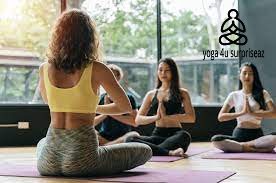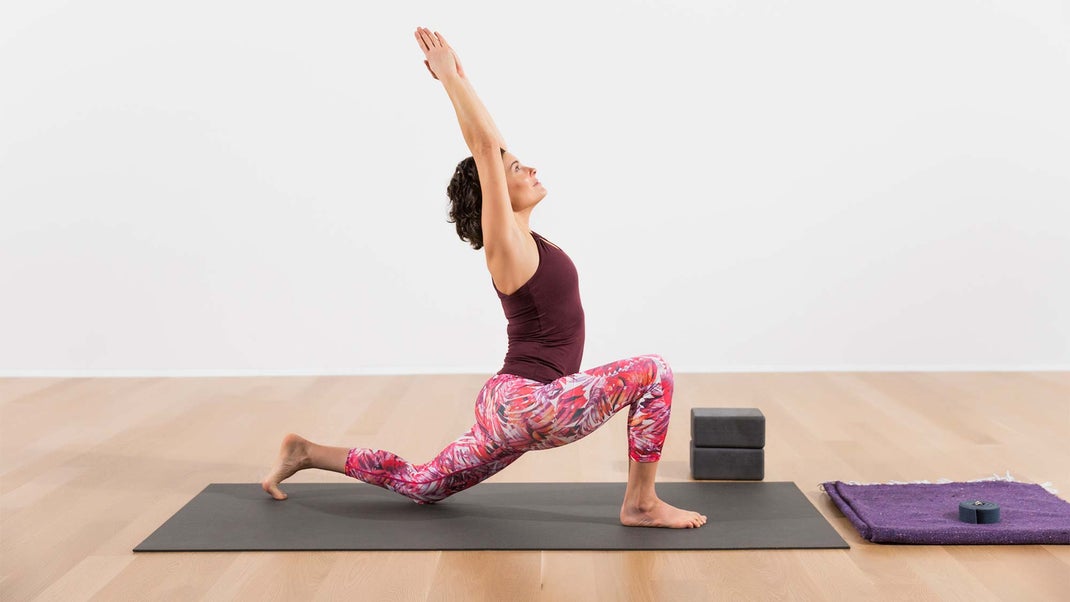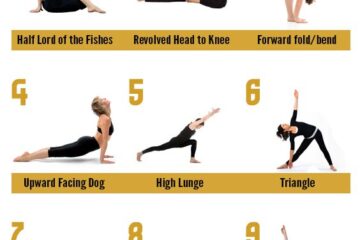Many people suffer from an overactive mind. It’s not uncommon for thoughts to race through our heads, making it difficult to sleep or focus on anyone thought. Meditation is a powerful tool that can help us overcome this problem and get more out of life. This post will outline some meditation techniques you can use today!
Ancient yogic texts said that we have one thousand thoughts for every blink of the eye. Many of these thoughts are unconscious, meaning we are completely unaware of them. However, many of the ideas that flicker through our minds certainly stick out and linger. Which ones will we attach to or identify with? Which ones serve our expansion and evolution? Which ones are self-sabotaging and distracting?
These are all questions that help us build awareness so we can make well-rounded decisions about what to pay attention to—decisions that can benefit our own lives as well as our collective humanity.
When we can make decisions from a place of empowerment, stability, authenticity, and compassion, we begin to do our part in co-creating a more harmonious world. It may sound too good to be true, but all necessary change starts with this simple process—evaluating the thoughts that come and go.
That’s what we learned while visiting Priya Jain, owner of Seventh Chakra Yoga, a studio in Huntington Beach, California. Jain, a Kundalini Yoga teacher, and my mentor said that when your mind can learn to discern the difference in thoughts, you can actually say “thank you, but no thank you.” Or you can welcome certain thoughts with more awareness and presence.
In order to cultivate this discernment, Jain shared with us a beginner’s meditation for yogis who are just learning how to be a witness to their own thoughts, rather than getting carried away by them. But truly, the following meditation is a wonderful check-in for practitioners of all levels. There is never a time when we should cease to contemplate the thoughts that come and go.
Though this meditation is simple, it has a powerful effect on the brain. Jain said that the mantra brings you into the present moment and influences you to sort out thoughts that are empowering versus ones that are distracting. In combination with the mudra, it allows the frontal lobe of the brain to begin to discern every single thought detected by the mind. It also allows you to sort out which thoughts are coming from your authentic identity and which thoughts are taking you away from your authentic self.
The mantra you’ll repeat is simple: “I am, all is.”
Step 1
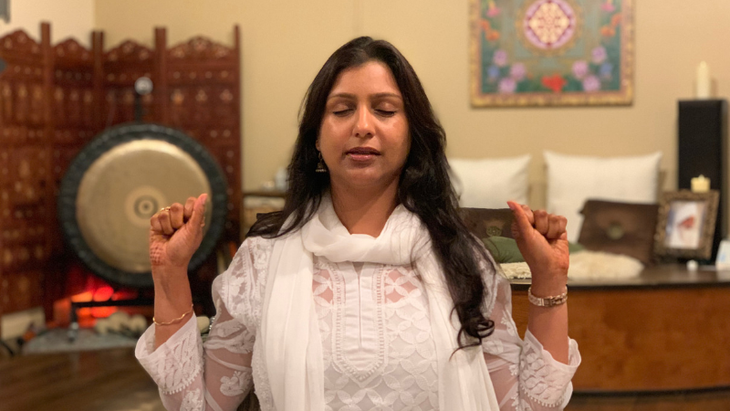
Sit cross-legged in Sukhasana (Easy Pose) on a yoga mat or find a comfortable seat on a chair. Make sure your spine is straight. Feel free to sit on blocks or blankets to help you sit tall. Bending your elbows at your sides, bring your hands near the shoulders in fists. This posture allows the heart to remain open.
Step 2
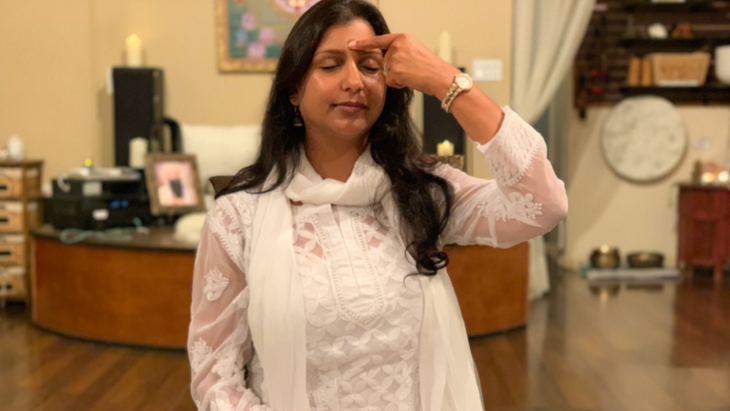 Brandon Spratt
Brandon Spratt
Close your eyes, focusing at your third eye, or brow point, as if you were looking out through the center of your forehead. (Photo for reference.)
Step 3
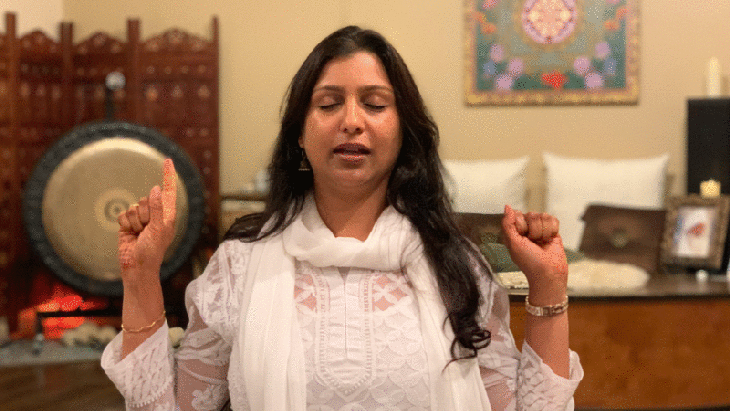 Brandon Spratt
Brandon Spratt
Starting with your right hand, move your index finger up, pointing it up toward the sky. When the index finger is up, say “I.” Bring your index finger back down into the fist and say “am.”
Step 4
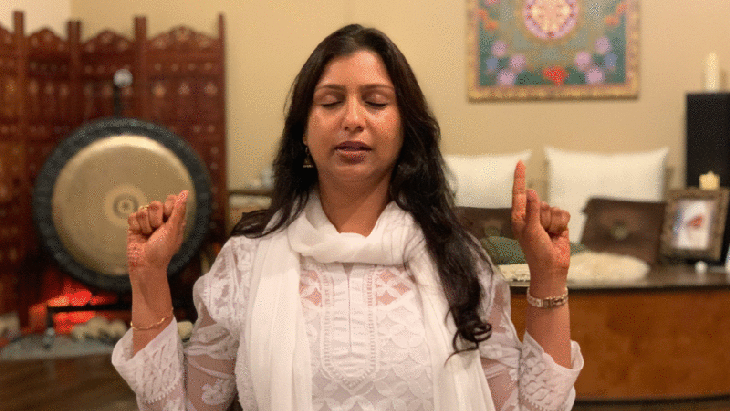 Brandon Spratt
Brandon Spratt
Move on to your left hand, and point your left index finger toward the sky. Once you point it up, say “all.” Bring your left index finger back to your fist, and once it is down, say “is.” Continue this mantra and alternating mudra meditation practice in a steady rhythm and monotone voice for 3-11 minutes.
Step 5
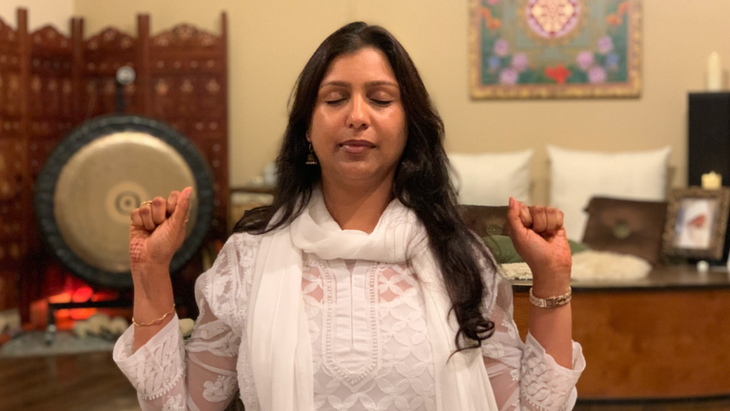 When you’ve concluded, inhale deeply and hold your breath for 15 seconds. Exhale. Repeat three times. Then allow your breath to come back to normal, and rest for a moment before leaving your meditation space.
When you’ve concluded, inhale deeply and hold your breath for 15 seconds. Exhale. Repeat three times. Then allow your breath to come back to normal, and rest for a moment before leaving your meditation space.
Many thanks to our partner, Sanuk!
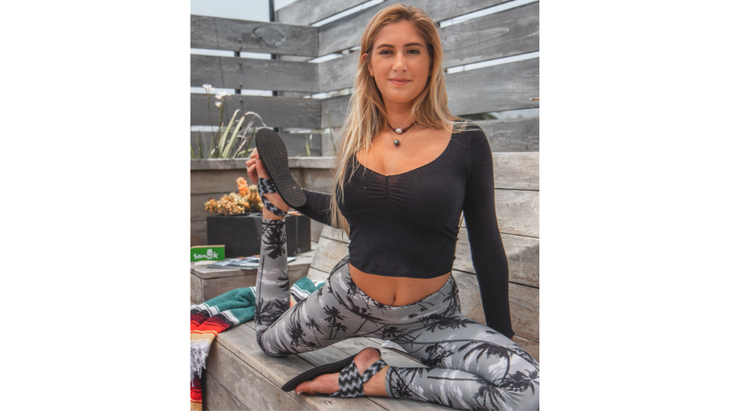 We are so grateful to our sponsor, Sanuk, for always spreading the joy and fun! Its new shoe, the Yoga Sling 3, is made out of recycled yoga mats and is the perfect shoe to wear throughout the day for comfort and support. “When I wear the Yoga Sling 3, I feel like I’m walking on a yoga mat all day, which is exactly how I want to feel,” says Sanuk ambassador, Jaysea Devoe.
We are so grateful to our sponsor, Sanuk, for always spreading the joy and fun! Its new shoe, the Yoga Sling 3, is made out of recycled yoga mats and is the perfect shoe to wear throughout the day for comfort and support. “When I wear the Yoga Sling 3, I feel like I’m walking on a yoga mat all day, which is exactly how I want to feel,” says Sanuk ambassador, Jaysea Devoe.
Many thanks to our partner, Newport Academy!
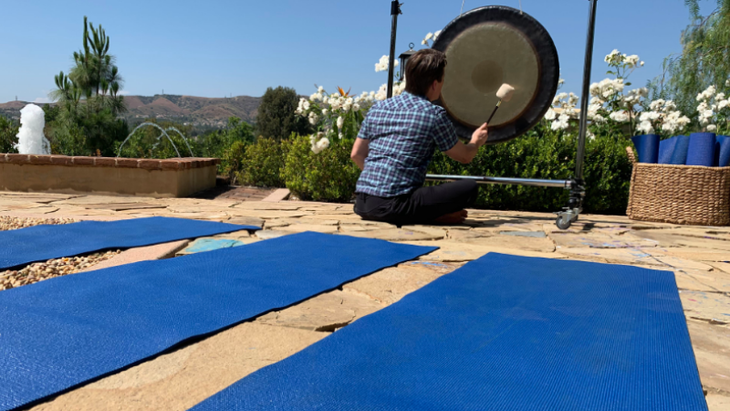 Newport Academy is taking a progressive approach to healing by offering a variety of alternative holistic approaches through yoga, breathwork, and sound healing, as well as traditional methods of therapy for teens and young adults struggling with mental health and substance use issues. Their offering is something that is unlike any other rehabilitation center out there today. It blends mental, emotional, and spiritual tools together for a comprehensive approach to wellness.
Newport Academy is taking a progressive approach to healing by offering a variety of alternative holistic approaches through yoga, breathwork, and sound healing, as well as traditional methods of therapy for teens and young adults struggling with mental health and substance use issues. Their offering is something that is unlike any other rehabilitation center out there today. It blends mental, emotional, and spiritual tools together for a comprehensive approach to wellness.
Conclusion:
Begin by sitting in a comfortable seat. Allow your eyes to close and try not to think of anything for two minutes. Repeat the mantra, “I am, all is” over and over again as you monitor each thought that comes into your mind.
If a distracting thought enters, simply say ‘no’ out loud or silently in your head and return to the mantra until it passes. Then repeat this technique on a daily basis!

